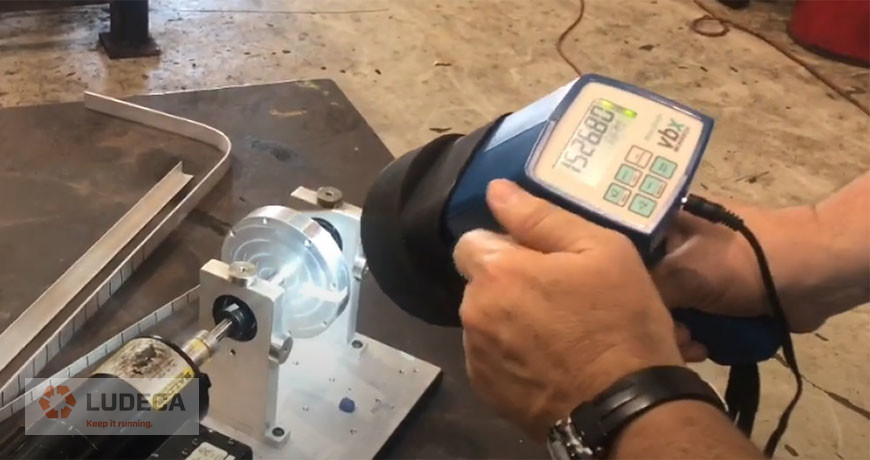
What Does a Stroboscope Do and Its Various Applications?
Share
The question what does a stroboscope do is often posed by tech professionals and enthusiasts who are keen to understand this fascinating device. A stroboscope is a remarkable piece of equipment widely utilized in various fields for its ability to make objects in motion appear stationary. This article aims to delve deep into the functionalities, working principles, and inventions surrounding stroboscopes.
Stroboscopes are not just tools for scientific experimentation; they have paved the way for groundbreaking advancements in both art and industry. By emitting flashes of light in quick succession, a stroboscope can illuminate rapid movements and bring visibility to hidden phenomena. We will explore in detail how these devices work and why they are essential for tech professionals.

Understanding the Mechanism of a Stroboscope
The science behind a stroboscope is relatively straightforward, yet the implications are vast. The basic principle relies on the persistence of vision, an optical phenomenon whereby an afterimage is retained by the human eye for a fraction of a second after the source has disappeared. This property allows stroboscopes to effectively capture and display motion.
The light emitted from a stroboscope is typically high-intensity and flashes rapidly, which gives the illusion of slowing down fast-moving objects. For instance, in manufacturing settings, stroboscopes can help technicians detect issues within rotating machines, thus making maintenance more efficient.
Key Components of a Stroboscope
Stroboscopes consist of several key components that collectively enhance their functionality:
- Light Source: Modern stroboscopes utilize LED technology for higher efficiency and longer lifespan.
- Control Mechanism: This allows users to adjust the flash rate and intensity according to specific requirements.
- Sensor: Many stroboscopes are equipped with sensors that can synchronize with the motion being analyzed.
Applications of Stroboscopes in Various Fields
The application of stroboscopes transcends a single industry. Let's examine some of their diverse uses:
1. Industrial Maintenance
One of the primary applications of stroboscopes is in industrial maintenance. Technicians rely on these devices to identify misalignments, vibrations, and wear in rotating machinery. By capturing the movement, repair professionals can diagnose issues quickly and efficiently.
2. Animation and Motion Studies
In the realm of animation, stroboscopes have been critical in creating and analyzing motion. Studio artists often utilize stroboscopic techniques to ascertain the fluidity of movement in animated sequences.
3. Research and Development
In scientific research, stroboscopes are indispensable tools for studying reactions in physics and biology. By illuminating cells or particles in quick succession, researchers can observe intricate details that would otherwise remain elusive. For more insights into how stroboscopes can aid scientific endeavors, check out this article on how stroboscopes work.
Famous Contributions and Inventors of Stroboscopes
The evolution of the stroboscope can be traced back to numerous inventors, each contributing significantly to its development. Specifically, Joseph Plateau and Simon von Stampfer are credited with pioneering this technology in the 19th century.
These inventors created the stroboscopic disc, a mechanical device that helped illustrate the illusion of motion. Their work laid the foundation for modern stroboscopes that we use today. For a historical perspective on this fascinating invention, refer to this link about who invented the stroboscope.
Choosing the Right Stroboscope for Your Needs
When selecting a stroboscope, several factors should be considered:
- Flash Rate: Depending on the application, different models have varying flash rates.
- Portability: If your work requires mobility, choose a lightweight, battery-operated model.
- Durability: In industrial settings, the stroboscope must withstand harsh environments.
- Price: Different models come with different price tags. Ensure you are making an informed decision based on your budget.
For a comprehensive guide on choosing the right stroboscope, you can visit this concise guide.
Stroboscope Maintenance and Care
Regular maintenance of your stroboscope is essential to ensure optimal performance. Here are some tips:
- Keep it clean: Dust and debris can interfere with the light source.
- Store appropriately: When not in use, keep your stroboscope in a protective case to prevent damage.
- Test functionality: Regularly check the flash rate and other functionalities to ensure everything is working correctly.
Conclusion
The question what does a stroboscope do brings to light not just the device's fundamental functions but also its importance across various domains. Whether in the manufacturing industry, animation, or scientific research, stroboscopes provide invaluable assistance by revealing the unseen in motion.

Frequently Asked Questions
1. What is the primary purpose of a stroboscope?
The primary purpose of a stroboscope is to visualize motion by emitting rapid flashes of light, making moving objects appear stationary.
2. Are there different types of stroboscopes?
Yes, there are various types of stroboscopes, including mechanical, electronic, and LED stroboscopes, each with its unique applications.
3. How do stroboscopes impact industrial processes?
Stroboscopes enhance industrial processes by allowing technicians to detect machine failures, ensuring efficient maintenance and safer operations.
As an Amazon Associate, I earn from qualifying purchases.
